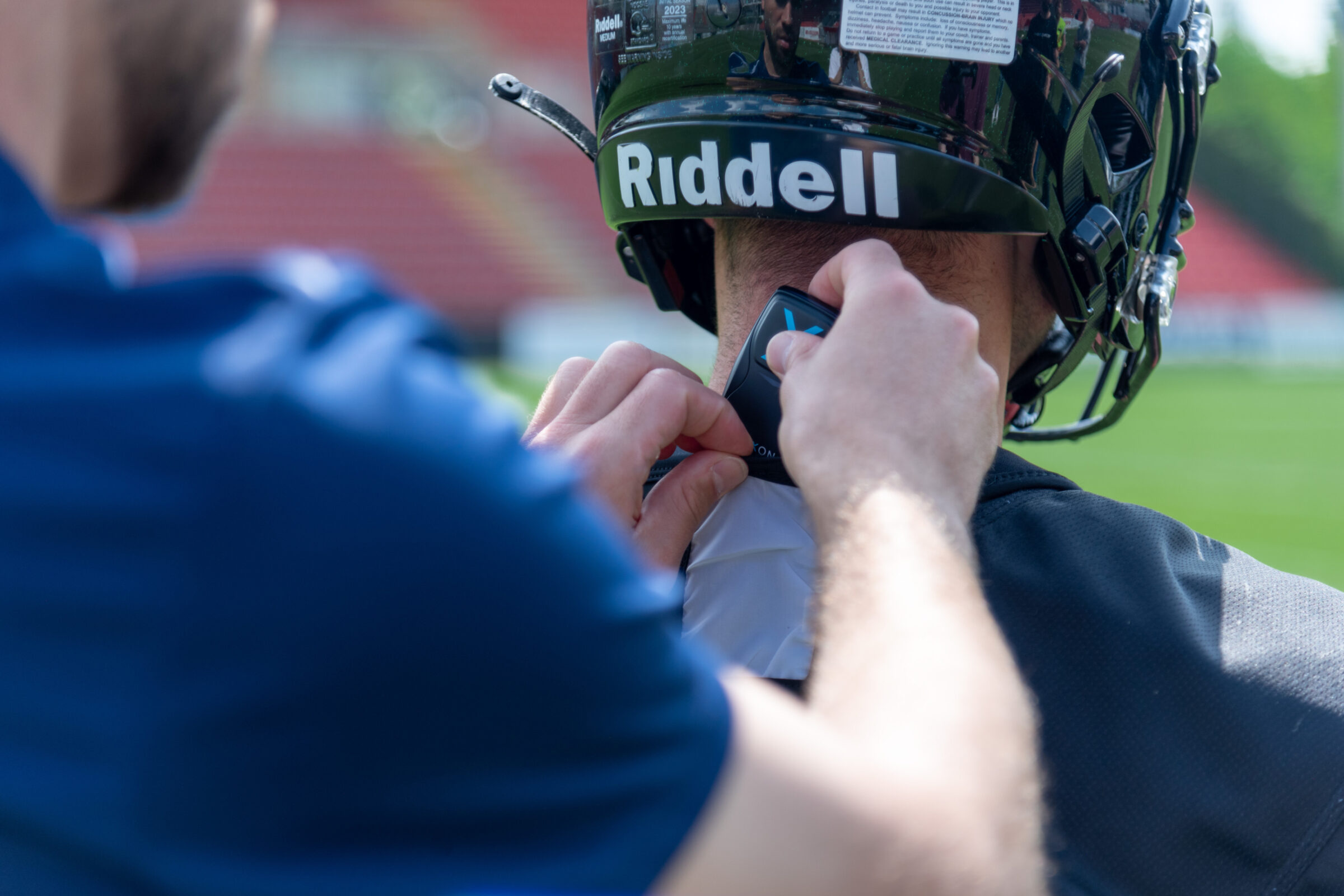Research Exposes What Puts College Football Players at Risk for Hamstring Strains
Hamstring strains are common among male college American football players. Researchers have been investigating potential risk factors to better understand and prevent these injuries, and they believe they have identified three that all coaches should track.

Hamstring strain injuries can significantly impact performance and sideline players during practices and games. A study titled “Risk Factors for Hamstring Strain Injury in Male College American Football Players: A Preliminary Prospective Cohort Study” aimed to identify some of the risk factors that are the root cause of this type of injury.
Researchers at the University of Tokyo Sports Science Institute enrolled 78 male college football players, all in skill positions, during a preseason medical assessment.
During the study period, 25 out of the 78 participants (32.1%) experienced a hamstring strain. The study highlights three critical risk factors for these injuries, including:
- Hamstring Flexibility: Injured players had significantly lower hamstring flexibility compared to uninjured players (p = 0.02). This suggests that maintaining good hamstring flexibility may reduce the risk of HSI.
- Hamstring-to-Quadriceps Strength Ratio (H/Q): The H/Q ratio was significantly lower in injured players (p = 0.047). A balanced strength ratio between these muscle groups is crucial for preventing HSIs.
- General Joint Laxity: Injured players exhibited lower general joint laxity scores, particularly in the total (p = 0.04), hip (p = 0.007), and elbow (p = 0.04) regions. Reduced joint laxity may contribute to HSI risk.
Pinpoint the Perfect Metrics for Decreasing Injury Risks in Football
Hamstring Exercises Decrease Strain Risks
Below are strategies and exercises address each of these factors and help prevent hamstring strains.
Hamstring Flexibility:
In running sports, the goal of enhancing hamstring flexibility is to reduce the risk of muscle tears or strains and to improve running efficiency, agility, and speed.
- Warm-Up: Encourage athletes to perform dynamic warm-up exercises before training or competition. Dynamic stretching helps improve muscle flexibility and prepares the body for intense activity.
- Static Stretching: Include static hamstring stretches after the warm-up. Hold each stretch for 20 – 30 seconds to enhance flexibility.
- Foam Rolling: Foam rolling the hamstrings can help reduce muscle tension and improve flexibility.
- Regular Mobility Work: Incorporate mobility drills that target the hip and hamstring muscles. These can include leg swings, hip circles, and lunges.

H/Q Ratio (Hamstring-to-Quadriceps Strength Ratio):
The Hamstring-to-Quadriceps Strength Ratio is a calculation in which the strength (peak torque) of the hamstring muscles in eccentric motion is divided by the strength of the quadriceps in a concentric motion. Here’s what researchers say can be done to attain a good ratio:
- Aim for a balanced strength ratio between the quadriceps and hamstrings. A ratio of 3:2 (quadriceps to hamstring strength) is recommended to decrease the risk of injury.
- Include hamstring-specific exercises in strength programs. Some effective exercises include Romanian deadlifts, glute-ham raises, and Nordic hamstring curls.
- Strengthen supporting muscle groups such as the gluteus maximus and calf muscles. These muscles assist the hamstrings during movement patterns like running and sprinting.
General Joint Laxity:
Joint laxity refers to increased flexibility or looseness in the joints. While some degree of joint mobility is normal, excessive laxity can increase injury risk.
- Strengthen Stabilizing Muscles: Focus on strengthening the muscles around the joints (e.g., hip stabilizers, core muscles). This helps stabilize the joints and reduces the strain on the hamstrings.
- Proprioceptive Training: Incorporate balance and proprioceptive exercises to improve joint stability. Examples include single-leg balance exercises and stability ball drills.
- Avoid Overstretching: While flexibility is essential, avoid excessive stretching that may compromise joint stability. Emphasize controlled movements during stretching routines.
By addressing these factors, coaches, players, and medical staff can work together to minimize the occurrence of this type of injury and keep athletes on the field. Researchers say future studies should explore interventions to optimize hamstring flexibility, strengthen muscle groups, and maintain joint health.
Using Data For Load Management in Football is Easier Than You Think
GPS Football Trackers for Hamstring Injury Prevention
GPS football trackers help coaches prevent injuries by providing live and post session data on players to help manage workloads.
And now it’s easier than ever to do it because KINEXON PERFORM GPS is the first athlete monitoring system for outdoor sports to offer a fully automated workload.

It’s completely wireless, and there is no waiting for your data to upload or download. Plus, you can access it from anywhere at any time.
If you’d like to learn more about it, feel free to reach out to us. Or download the brochure by clicking the link below.














